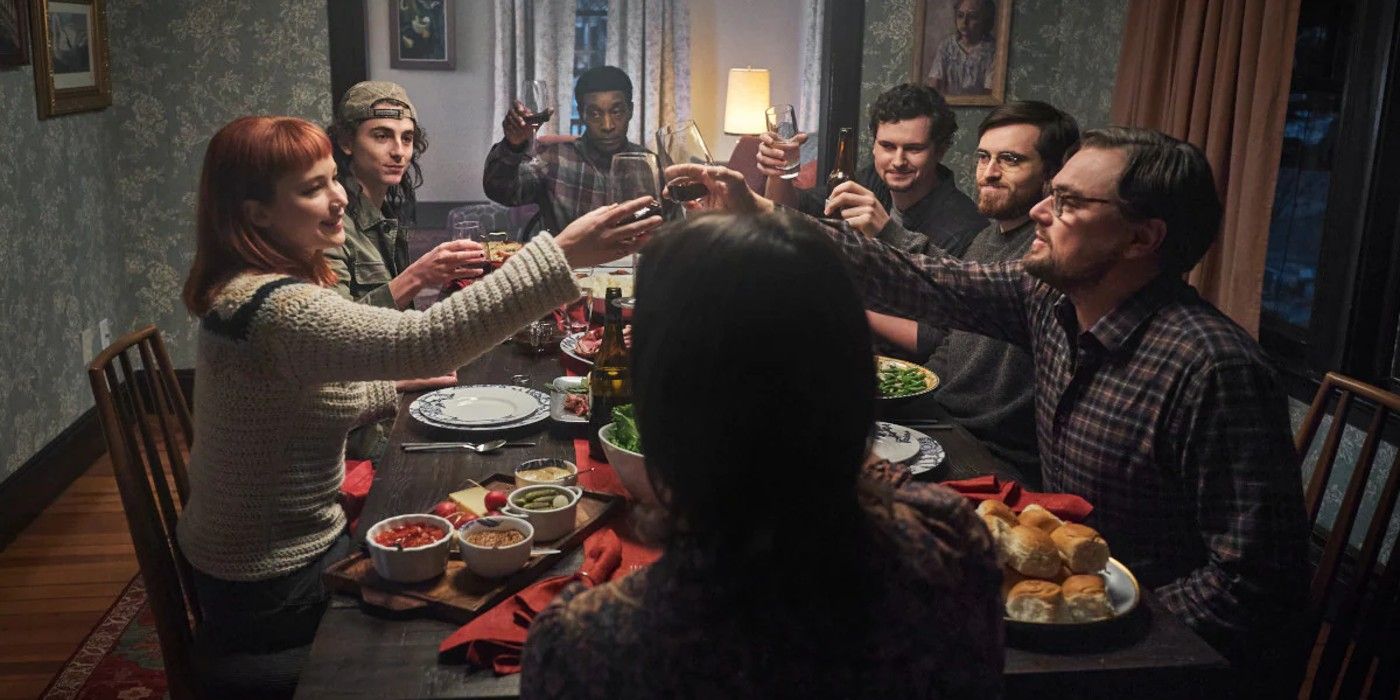The brutal ending of Don’t Look Up has a hopeless view of humanity and, as a result, the movie inverts the equally tragic but much more optimistic ending of 2021’s Netflix horror hit, Midnight Mass. On the face of it, Midnight Mass and Don’t Look Up don’t seem to have too much in common. The former is a fusion of small-town drama and religious horror, while the latter is an ebullient satire of climate change denial.
However, although Midnight Mass’ widespread critical acclaim does not match the divided reception of Don’t Look Up, on further inspection, the two Netflix releases do have more in common than meets the eye. Both Don’t Look Up and Midnight Mass use fantastical genre elements—an “angel”, or vampire in one, a planet-threatening comet in the other—to make cogent points about contemporary politics through the use of metaphor. Furthermore, both productions feature endings that divided their audiences—although they make the exact opposite point.
While many viewers found the ending sad, Midnight Mass’s two final twists—that the violence brought on by vampirism can be resisted on an individual level, and that no one left on the island survives the night—underlined the central message of the series. Midnight Mass’ twist ending illustrates the idea that, sometimes, individuals need to make painful sacrifices to ensure a brighter future for their community, even at great cost to themselves. In contrast, Don’t Look Up offers the exact opposite outlook as, in the end, a problem that could have been solved by humans working together not only becomes insurmountable, but destroys them due to greed, avarice, and in-fighting.
Both Midnight Mass and Don’t Look Up’s stories revolve around an existential threat to humanity that can only be stopped at great personal cost to a handful of humans. However, Don’t Look Up’s powerful politicians don’t want to risk being seen as radical, the uber-rich are safe in the delusion that they will be alright even in the face of oblivion, and the media are actively misinforming the masses and ensuring their doom for the sake of improving engagement metrics. In contrast, Midnight Mass's Stephen King-style fusion of satire and horror depicts characters who have already lost everything to the vampire still deciding to die fighting the threat rather than allowing it to spread further and cause more death and destruction.
The image of Erin Green dying to save America from the vampire even after the monster has cost her unborn child its potential life is flipped in Don’t Look Up’s already-infamous closing scene of the heroes attempting to ignore the impending doom of the planet, even as the comet collides with earth. In Don’t Look Up, no one individual can change their behavior enough to help humanity avoid catastrophe whereas, in the world of Midnight Mass, everyone (save for Bev Keane) can eventually accept the fact that their death is necessary to keep the rest of the world safe and alive. However, despite the endings being in direct opposition to each other, both Netflix releases make the same point in their closing scenes. Despite its dark tone, Midnight Mass reassures viewers that humanity is ultimately decent and will save itself from ruin, where Don’t Look Up similarly goads viewers into asking whether humanity is so feckless in the hopes that it will prove untrue.


